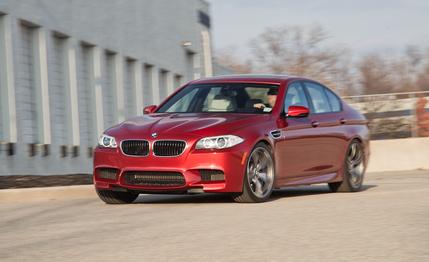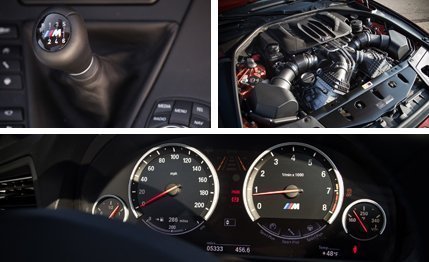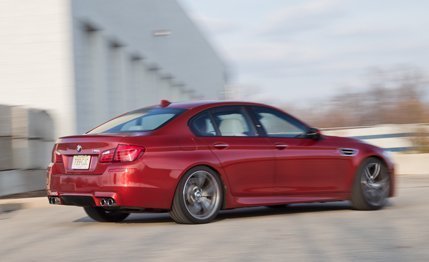 Instrumented Test
Instrumented Test

Most days, we live in a reality-based reality. Yet when we first caught sight of this BMW M5 test vehicle in our office parking lot, we secretly hoped that its warm, metallic-pumpkin color would somehow soften reality's grip and help thaw the car's chilly detachment.
It was the M5's cadaver-cool character and elaborate array of complex complexity (81 possible settings for steering, suspension, throttle, and transmission!) that doomed a blue example we drove in Germany to third place in a comparo against the Mercedes-Benz E63 AMG and the Audi S6.

But here, awash in glowing autumnal paint, was the M5 with a conventional manual transmission. A manual-transmission car, in case you've forgotten, is one with that lever in the center console and the clutch pedal that, by forcing a driver to be more involved, can increase the driver's involvement with the car. We North Americans feel strongly that such a thing should exist in performance vehicles, so BMW is making the six-speed manual available as a no-cost alternative to the dual-clutch seven-speed automatic that is the M5's standard transmission all over the world.

For the M5, BMW has taken over the six-speed ratios and all, from the 550i model and bolted it to the M5's 560-hp, twin-turbocharged V-8. The time has long since passed when we expect manual-transmission cars to be quicker than their auto-shifting counterparts. So it was no surprise that the manual car was three-tenths of a second slower to 60 (4.0 seconds versus 3.7) and a couple of tenths less quick through the quarter mile (12.1 at 120 mph versus 11.9 at 123). This bothers us not one bit. A 4.0-second-to-60 luxury sports sedan is still plenty enough.
The surprise was that, after our time in the manual-equipped car, we might actually choose the DCT, were we buying an M5. Yes, we're the "Save the Manuals!" guys. And we're delighted that BMW decided to make the manual available. But this marriage of manual transmission to M5 is not an especially happy one. The clutch takeup is abrupt. Perhaps it will mellow with age, but our tester, with 4800 miles, is all we have to judge. What's less likely to improve over the car's life is the shifter, which is long of throw and rubbery in action. The M5 manual also suffers from a distressing amount of fore-aft movement, which we're attributing to driveline windup and inappropriate throttle mapping. Try as hard as we might, a run through all the gears had all of our passengers nodding their heads in sympathy with every shift. This is a difficult car to drive smoothly.

At least its downshifts are smoothed by an automatic rev-matching function, similar to the optional system in the Nissan 370Z. As with the Nissan, the M5 gives you a perfectly timed throttle blip on down-shifts. It works well, but there's no easy means of disabling this function the way there is on the Nissan. The only means of turning it off is to set the throttle in sport-plus mode. The manual-transmission car inherits most of the dual-clutch car's embarrassment of choices, but it doesn't provide the one setting choice we'd like.
So while this M5 remains an impressively powerful high-speed sled, its remote steering, control fussiness, and general aloofness remain. And with its drivability failings, the manual-transmission arrangement doesn't help. It is a beautiful color though.